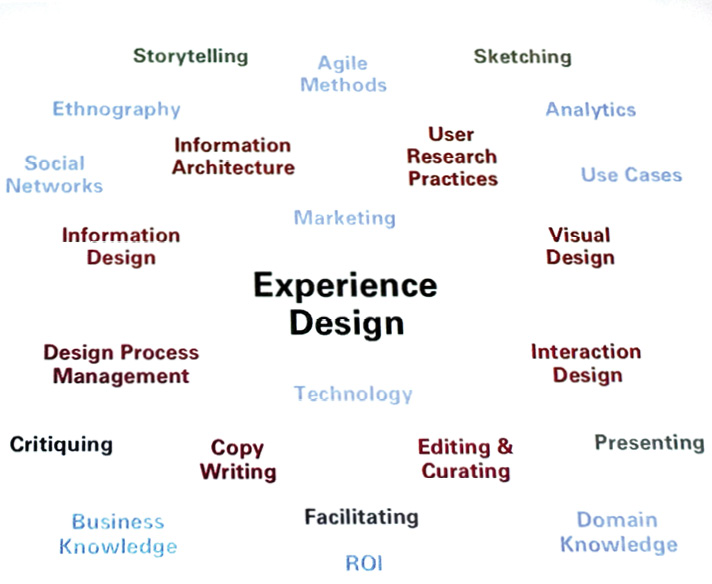 As a technical communicator who spent many years acquiring user experience (UX) and design skills, I am especially excited about this issue of Intercom. I recognized early in my career that the very best and most valuable content is created and delivered within the context of:
As a technical communicator who spent many years acquiring user experience (UX) and design skills, I am especially excited about this issue of Intercom. I recognized early in my career that the very best and most valuable content is created and delivered within the context of:
- A good knowledge of how the human brain processes information;
- A deep understanding of the specific audience for the content and what they truly need to be successful;
- A strong architecture, flow, and interactions for the product needing documentation;
- A visual language to complement and communicate the message in the words; and
- A user-validated design and development process.
Unfortunately, few of my employers through the first 20 years of my career embraced user experience design. While I was not always able to influence the design of the product with my UX and design skills, I could at least ensure that the content was the best it could be under the circumstances.
As Jared Spool alludes to in the first article of this issue, we no longer have the luxury of acquiring a few additional non-writing skills along the way and parlaying them into a little more seniority or extra salary. Even in companies serving highly technical markets, the tolerance of those markets for complexity is dropping dramatically every day.
In fact, I asked Jared to write his article after I watched him deliver “It’s a Great Time to Be a UX Designer,” the keynote address for CIDM CMS/DITA North America in April 2017. In that presentation, he told a room full of technical writers that creating great experiences requires a new breed of designer—a real-life unicorn—and one that embodies some level of all the skills: coding, visual, interaction, content, business, and audience domain skills. He included this slide to visualize his idea (see Figure 1).
If, like I did, you are mentally ticking off which skills you do and don’t have, you might discover that you have more skills than you don’t. I do, and the great technical communicators that I know do, too. As a result, I came away from Jared’s presentation with an even deeper conviction that the technical communication discipline is likely the largest historical base of these unicorns.
In my 35-year career, I have practiced all of these skills at some point or another. In fact, I used all but visual design on a day-to-day or week-to-week basis during the last 20-25 years of my career. (I’m not a great visual designer, but I know the principles well enough that I can get by. It won’t be beautiful, perhaps, but it will communicate correctly and effectively.) Taking this a step further, I believe that to be a great content (or design) architect and strategist, you need product management, business growth, and leadership skills, as well.
The connection, intersection, and relationship among and between content and design disciplines, skills, and professionals is something that I’m passionate about, and it’s something that defines a significant portion of the future of technical communication skills and work. As a result, I’m thrilled to bring you this issue filled with perspectives on this theme.

To start us off, Jared Spool provides his perspective on our core writing skills and how they can provide essential business value when we strive to design our content for intuitive communication.
Next up, Jenifer Schlotfeldt and Missy Lim describe how to bring together essential functions of content and design to create a dream team that breaks down silos and creates a better experience for their audiences.
Then Jonah Schwartz dives deep into the subject of graph colors and how data visualization and the design of graphs affects multicultural communication.
Finally, Michael Opsteegh reviews Justinmind, a software platform used to develop software prototypes, and how it can be used to create low-fidelity prototypes for usability testing.
We also have three columns for you in this issue. Guest columnist for The Academic Conversation, Brandon Strubberg, provides a cautionary tale about predatory publishers and how to avoid them, in particular for academics. Kirk St.Amant delves into the cognitive load limitations of the human brain and how to overcome them through cognition, chunking, and design. Alan Porter describes the tension between technical communicators’ love (and need for) structured content and the marketing need for creativity to gain engagement.
As always, don’t forget to check out the Society Pages!
And last, but certainly not least, in Witful Thinking, Charles Lawrence reminds us of the value of having an elevator pitch handy when people ask us exactly what it is that we do.
The feature authors, columnists, and I live for your feedback! We provide our email addresses so that you can get in touch. We would also love to discuss any articles with you online—did you know that you can comment on the Web version of any article? Start or join a conversation! I’ll be looking for you!
Until then, enjoy the issue!
— Andrea L. Ames


